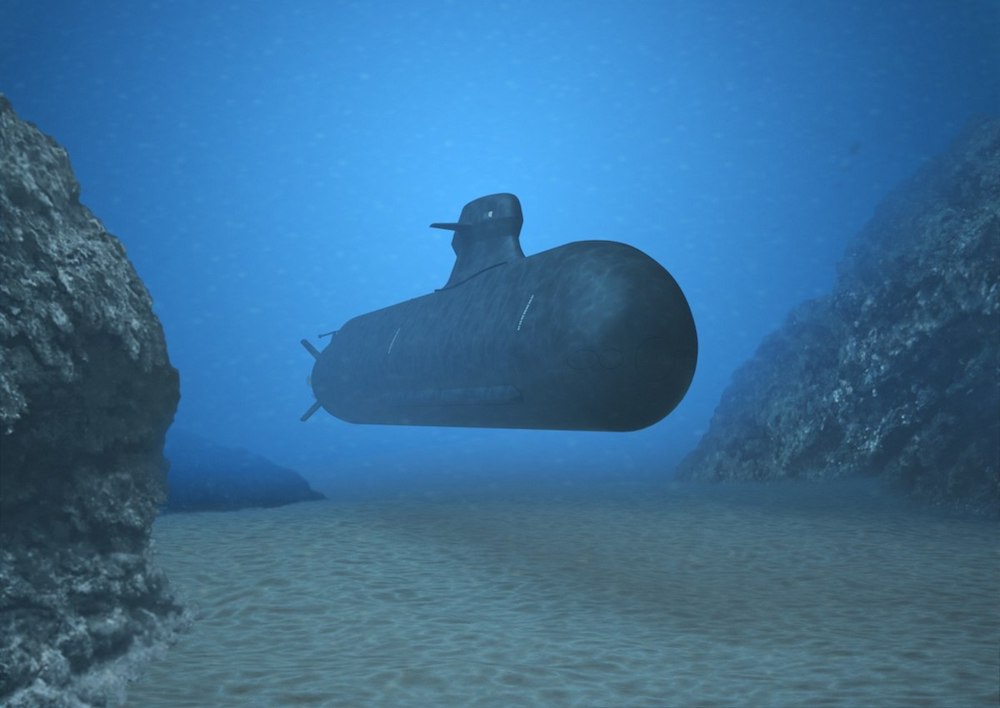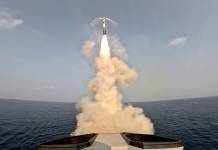China may take pride in its military might, but it cannot just shoot down the widespread allegations of making copies of foreign defense equipment. And China’s latest Yuan class submarine raises a similar suspicion.
China Admits Its Top Air Force Pilots Defeated By ‘Adversaries’ In Fighter Jet Dogfight
The new sub is believed to be a Type 039C Yuan class diesel-electric vessel. The first images were shared on Weibo, a Chinese microblogging site. A short video was also posted on the social media platform TikTok showing the submarine being moved upriver from the shipyard at Wuhan.
Wo… ? #PLAN
(video from TikTok/617755805) pic.twitter.com/GQgLwFFPpU— 彩云香江 (@louischeung_hk) June 17, 2021
The sail design has a striking similarity with that of Sweden’s next-generation A26 Blekinge class submarine, TheDrive claimed.
China’s Secretive Submarine
Writing for the Naval News, defense analyst H.I. Sutton said that the reshaped sails may provide a greater volume that can be put to use by positioning new systems. He also highlighted the angled chine along the angled upper section.
The angles are similar to the fuselages of stealth fighter jets and may prove effective in reducing the radar cross-section to make it more stealthy when the submarine is on the surface.
The Yuan-class subs are the backbone of the Chinese conventional submarine fleet, Sutton wrote in an earlier report. These are believed to be equipped with Air Independent Power (AIP), which uses the closed-circuit Stirling engines to operate its electric motors while submerged.
- At €7.8B, Why Indian Rafale Jets Are ‘Double The Cost’ Than Egyptian Rafales?
- Why Did Netizens ‘Mock’ Nigeria For Importing JF-17 Fighter Jets From Pakistan?
This is similar to the engine on the A-26 class as well. This enables the submarine to avoid using a snorkel in order to run its diesel generators and recharge the batteries.
As a result, the batteries are found to save much more power making it possible for the submarine to remain submerged for a longer duration.

However, there is a catch. While being submerged for longer may provide stealth to the vessel, the AIP generates much less power forcing the submarine to move at much-reduced speeds, according to Sutton.
There is also speculation that the new submarine is being fitted with lithium-ion batteries, which increase the endurance of the vessel and have a quicker charging and longer battery life.
Besides, these batteries do not require much maintenance and can substitute the AIP engine. However, no concrete information on the batteries of the Chinese submarine is available yet.
A Fully-Armed Submarine
Like its predecessors, this new submarine is also expected to be armed with a variety of weapons, such as wire-guided torpedoes, anti-ship missiles, and mines. It may also carry land-attack cruise missiles, which may be shot through torpedo tubes.
The new submarine is expected to be similar to the Type 039A/B in size, measuring around 250 feet in length and with a displacement capacity of 3,600 tons. A report submitted to the US Congress ‘China Naval Modernization: Implications for US Navy Capabilities’ mentioned that China may acquire at least 25 Yuan class submarines by 2025.
The Swedish A26
In 2015, the A26 program was launched after the Swedish Defence Materiel Administration (FMV) placed an order for two new-generation submarines for the Royal Swedish Navy.

The Blekinge-class refers to next-generation submarines, 65 m in length with a surface displacement capacity of 2,000 tonnes. Equipped with a Stirling AIP, this sub can remain submerged for more than 18 days at a stretch. It can also carry 35 sailors, including commandos as well as passengers.
The A26 is equipped with a Multi-Mission Portal, which provides access to a flexible payload lock, which can be used by special operation forces. It enables the submarine to rapidly deliver swimmers, underwater vehicles, and various other equipment.
According to Swedish Defense Ministry, the first sub would be delivered in 2024, and the second one in 2025.
Allegations Of Copycat Designs
It seems China has always looked for “inspirations” while designing and developing military equipment.
The Chengdu J-10 is strikingly similar to the US F-16. Last year, an updated version of the J-10 entered the service of the PLA Air Force, a lightweight aircraft equipped with advanced fire control radar array and other domestically developed updates, reported Popular Mechanics.
China’s Caihong-4 (CH-4) armed drone is believed to be based on stolen plans for the General Atomics MQ-9 Reaper. The CH-4 is equipped with fewer outboard stations for mounted ordnance. Though modeled on the American UAV, the propulsion system of the Chinese version has lesser capability.

China’s J-20, a fifth-generation stealth fighter, is believed to be a direct copy of the US F-22 Raptor. It was alleged the Lockheed Martin’s design plans were stolen by a Chinese national Su Bin. The same person was suspected to be behind China’s J-31 program, which is apparently based on Lockheed Martin’s F-35 Joint Strike Fighter.
The underdevelopment J-31 will have a greater operational range and a much larger payload capacity.
China is also believed to have copied Russian military hardware. For instance, unable to acquire the design secrets of erstwhile Russia’s Soviet-era Su -33, China went ahead and purchased a Su-33 prototype aircraft from Ukraine.
China used reverse engineering to turn this into a T-10K-3.
The overall look of this carrier-based fighter is similar to the Su-33, with some Chinese modifications.
Similarly, the airframe of the Chinese J-11 is reportedly based on the Soviet-designed Su-27. The Chinese readily incorporated the advanced avionics systems and fly-by-wire technology of the Su-27 into their later Chinese platforms as well.
Earlier this year, The Eurasian Times reported on China’s ‘Sea Dragons’ or PLA Navy Commandos conducting an underwater training session with needle guns, which were believed to be QBS-06 rifle and the QSS-05 pistol. The QBS-06 is an underwater assault rifle and is similar to the APS rifles of the Russian naval commandos.
Last year, there were reports of China’s border defense troops using their indigenously-built off-road assault vehicles, Dongfeng Mengshi, the design of which appeared to be a copy of the American Hummvee.
Read More
- WATCH: Russian Su-30 Fighter Forces F-35 Stealth Jets To Retreat In Their ‘First-Ever Encounter’
- Despite World’s Biggest Navy, Why China Will Struggle To Match Indian Submarines In The Indo-Pacific?





